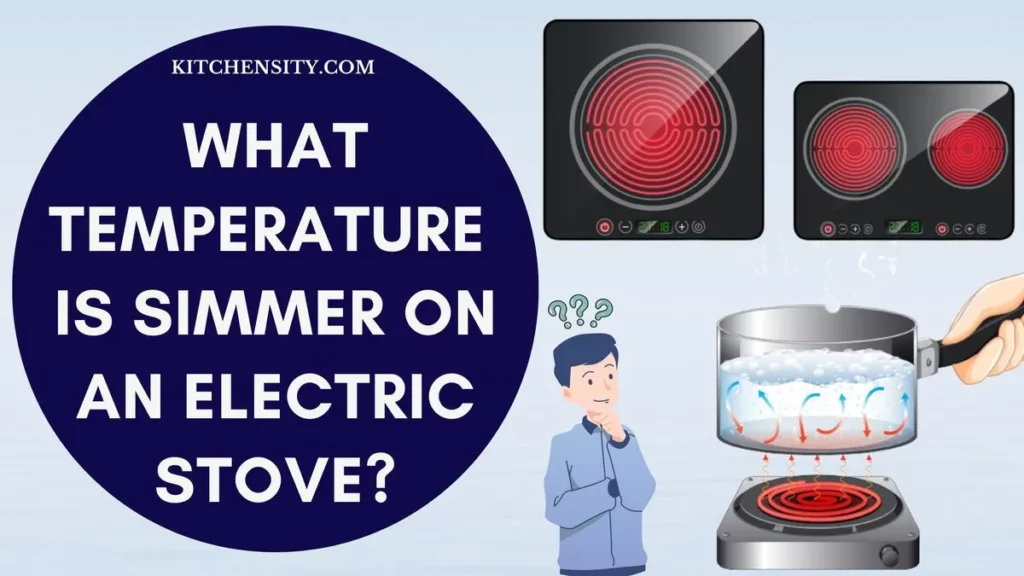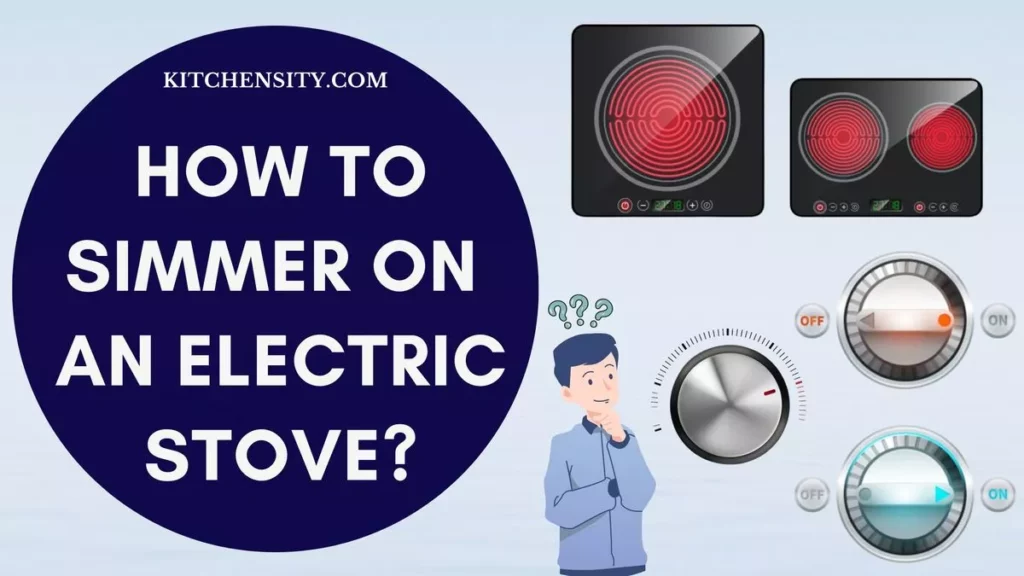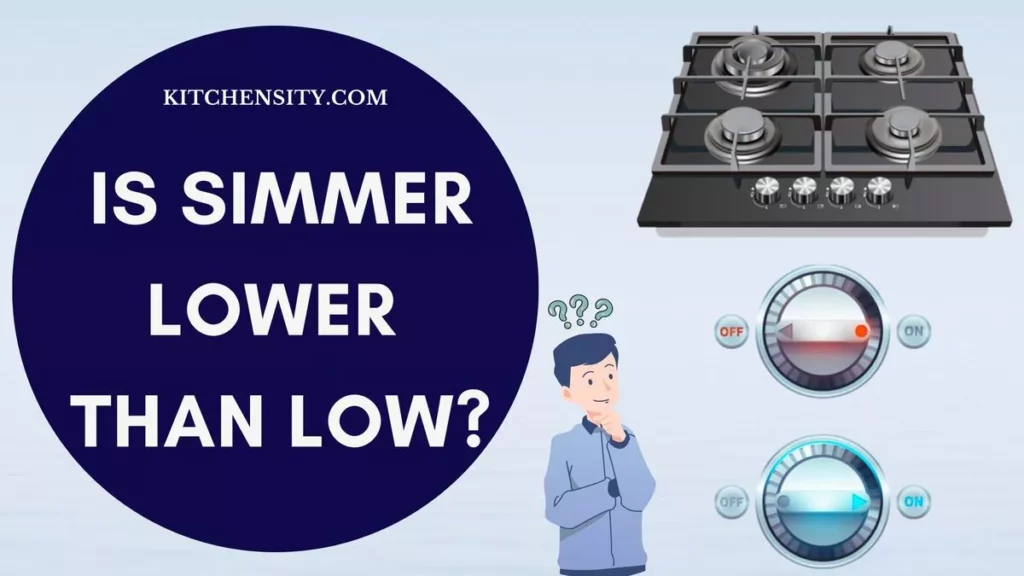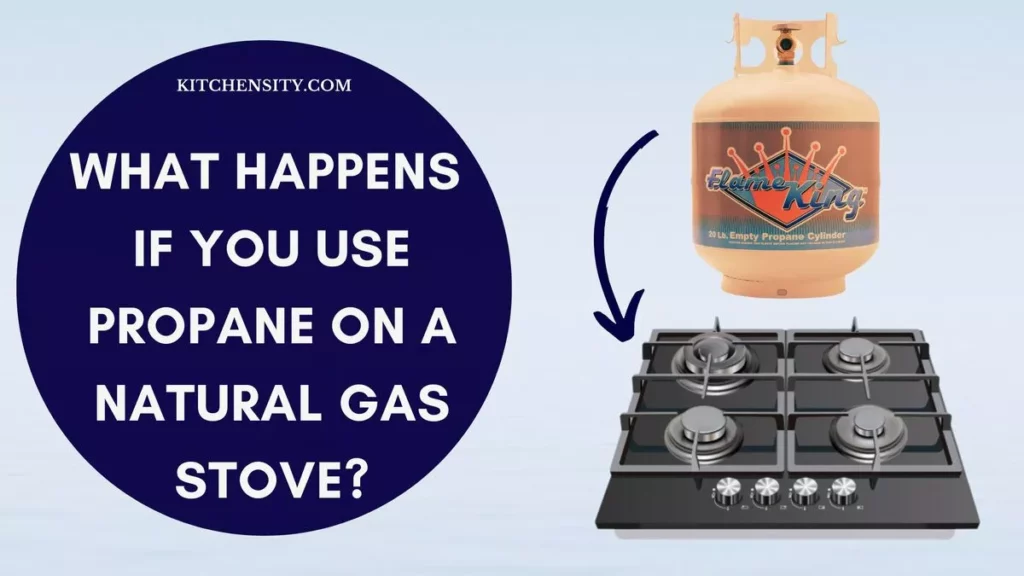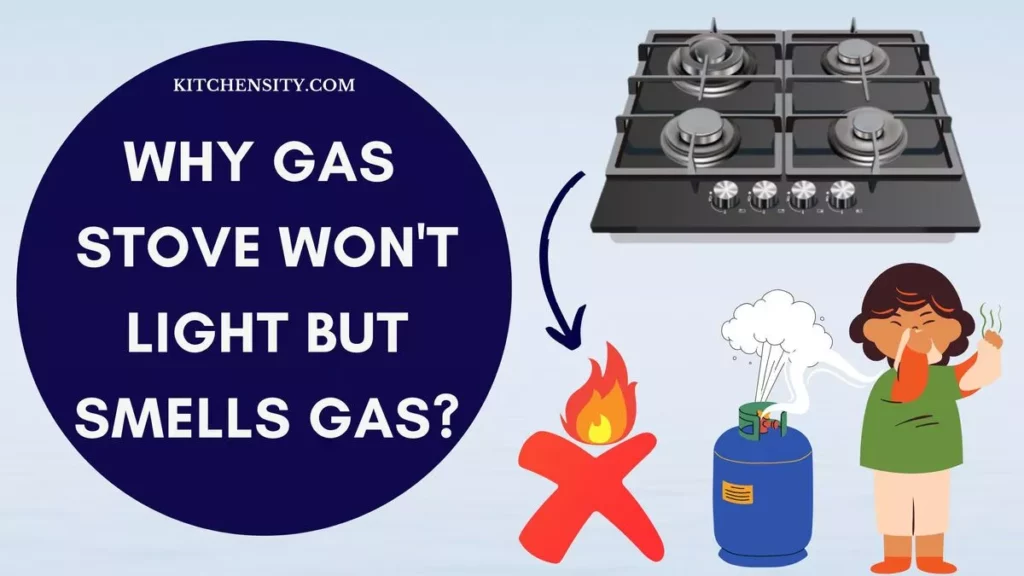In our modern kitchens, gas stoves have become an indispensable part of daily life. They provide the quick and efficient heat needed for cooking our favorite meals.
However, with convenience comes responsibility, and safety should always be a top priority. One common question that often arises is whether gas stoves turn off automatically.
In this article, we will explore this topic in detail, addressing your concerns and shedding light on the safety mechanisms built into gas stoves.
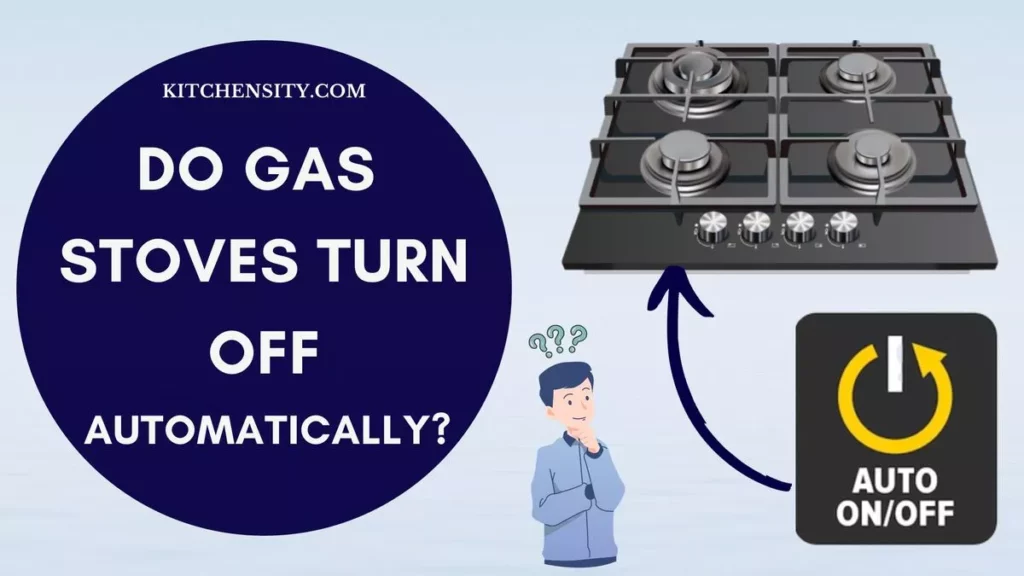
Table of Contents
- 1 Do Gas Stoves Turn Off Automatically?
- 2 How Do Gas Stoves Work?
- 3 What Is An Automatic Shutoff Feature?
- 4 Do Gas Stoves Have An Automatic Shut-Off Feature?
- 5 Safety Tips For Using A Gas Stove With An Automatic Shutoff Feature
- 6 Common Problems With Automatic Shutoff Features
- 7 How To Maintain Your Gas Stove’s Automatic Shutoff Feature?
- 8 What To Do If Your Gas Stove’s Automatic Shutoff Feature Malfunctions?
- 9 Final Verdict
- 10 FAQs (Frequently Asked Questions)
- 10.1 What Happens If You Forget To Turn Off The Gas Stove?
- 10.2 Do Gas Stoves Have A Safety Shut Off?
- 10.3 Do All Gas Stoves Have Automatic Shut-Off Features?
- 10.4 Can I Retrofit My Older Gas Stove With An Automatic Shut-Off Feature?
- 10.5 What Should I Do If I Smell Gas Near My Gas Stove?
- 10.6 Are Gas Stoves Safe For Households With Children?
- 10.7 Is It Necessary To Have A Gas Detector In My Kitchen If I Have A Gas Stove With Safety Features?
Do Gas Stoves Turn Off Automatically?
Yes, many modern gas stoves are equipped with automatic shut-off features as part of their safety mechanisms. These features are designed to enhance safety by automatically turning off the gas supply or burners under specific conditions or circumstances that could pose a safety hazard.
The inclusion of automatic shut-off features is a common practice in the design of gas stoves to reduce the risk of accidents and gas-related incidents.
Also Read – How Long Can You Leave An Electric Stove On?
How Do Gas Stoves Work?
Gas stoves are a common fixture in kitchens around the world, providing a quick and efficient means of cooking. It works by utilizing a controlled flow of natural gas or propane, which is ignited to create a flame. The size and intensity of the flame are adjustable, allowing for precise cooking control.
Modern gas stoves often include safety features like the Flame Failure Device to enhance safety.
To understand how gas stoves work, it’s essential to grasp the underlying mechanisms of these appliances.
- Gas Supply: Gas stoves are powered by either natural gas or propane. These gases are supplied through pipes connected to your home’s gas line or from portable propane tanks.
- Burners: Gas stoves typically have multiple burners, each with its control knob. The knobs allow you to adjust the flow of gas to the burners, controlling the intensity of the flame.
- Ignition: When you turn the control knob for a burner to the “on” position and activate the ignition switch, one of two ignition methods comes into play:
- Pilot Light: In older models, a small, continuous flame called a pilot light remains lit beneath the burner. When you turn on a burner, gas flows to the pilot light, which ignites the burner’s flame.
- Electric Ignition: Most modern gas stoves use electric ignition systems. When you turn on a burner, an electric spark or hot surface igniter is used to ignite the gas. This method is more energy-efficient and eliminates the need for a constantly burning pilot light.
- Gas Combustion: Once the gas is ignited, it mixes with oxygen from the air, creating a controlled flame. The flame heats the burner’s surface, which, in turn, heats your cookware.
- Heat Control: The control knob allows you to regulate the size of the flame, and consequently, the amount of heat produced. This precise control is one of the advantages of gas stoves, making them ideal for a wide range of cooking tasks.
- Safety Features: Modern gas stoves often include safety features like the Flame Failure Device (FFD). The FFD monitors the flame and automatically shuts off the gas supply if the flame goes out unexpectedly. This prevents the release of unburned gas, enhancing safety.
- Cooking Surfaces: Gas stoves can have various cooking surfaces, including open burners with grates, sealed burners with smooth surfaces, or a combination of both. The choice of cooking surface depends on the stove’s design and your cooking preferences.
- Oven Function: In addition to burners, many gas stoves include an oven. The oven operates using the same gas supply but with a separate burner. It typically has its control knobs for temperature and baking functions.
- Maintenance: Regular maintenance is essential to keep your gas stove in optimal working condition. This includes cleaning burners and igniters, checking for gas leaks, and ensuring all components function correctly.
Also Read – How Hot Do Electric Stove Burners Get?
What Is An Automatic Shutoff Feature?
An automatic shut-off feature, in the context of appliances and devices, is a safety mechanism designed to turn off the device or appliance automatically under specific conditions or circumstances.
The primary purpose of such a feature is to enhance safety and prevent accidents or damage that could occur if the device were to continue operating unchecked.
Automatic shut-off features are commonly found in various household appliances and industrial equipment, and they serve different purposes depending on the device’s function.
Here are some key aspects of an automatic shut-off feature:
- Safety Enhancement: The primary goal of an automatic shut-off feature is to improve safety by preventing potential hazards or accidents. These hazards could include overheating, gas leaks, power surges, or other unsafe conditions.
- Specific Triggers: Automatic shut-off features are triggered by specific conditions or events. For example, a gas stove might have an automatic shut-off triggered by a flame going out (Flame Failure Device), while a space heater might have an automatic shut-off triggered by overheating.
- Preventing Damage: In addition to safety, automatic shut-off features can also prevent damage to the device itself. For instance, a modern coffee maker may automatically turn off after a certain period to avoid burning the coffee or damaging the heating element.
- Energy Conservation: Some devices use automatic shut-off as an energy-saving measure. This is commonly seen in appliances like computers, monitors, and lights, which automatically power down when not in use to reduce electricity consumption.
- Timer-Based Shut-Off: In many cases, devices allow users to set a timer for automatic shut-off. This is often used for cooking appliances (e.g., ovens) to ensure that food is not overcooked.
- User Control: While some automatic shut-off features are pre-programmed and non-adjustable, others offer users the flexibility to customize the conditions or time duration before shut-off occurs.
- Safety Compliance: In some industries, automatic shut-off features are mandated by safety regulations to ensure that equipment operates within safe parameters.
- Reactivation: Depending on the device and its design, an automatic shut-off can often be reactivated manually by the user once the issue or condition that triggered the shut-off is resolved.
Also Read – How To Fix A Yellow Flame On A Gas Stove?
Why Are Automatic Shutoff Features Important?
Automatic shutoff features are important because they can help to prevent accidents and injuries. They can do this by turning off a device or appliance automatically when a problem is detected.
Here are some of the specific reasons why automatic shutoff features are important:
- They Can Prevent Gas Leaks: Gas leaks can be dangerous because they can cause fires and explosions. Automatic shutoff features can help to prevent gas leaks by turning off the gas supply if the flame goes out.
- They Can Prevent Electrical Fires: Electrical fires can be caused by several things, including faulty wiring, overloaded circuits, and short circuits. Automatic shutoff features can help to prevent electrical fires by turning off the power to the appliance if there is a problem.
- They Can Prevent Water Damage: Water damage can be caused by several things, including leaks, floods, and spills. Automatic shutoff features can help to prevent water damage by turning off the water supply if there is a problem.
- They Can Prevent Injuries From Hot Appliances: Hot appliances can cause burns if they are not handled properly. Automatic shutoff features can help to prevent injuries from hot appliances by turning off the appliance if it gets too hot.
- They Can Extend The Life Of Appliances: Appliances can be damaged by overheating, overloading, and other problems. Automatic shutoff features can help extend the life of appliances by turning them off if there is a problem.
Overall, automatic shutoff features are an important safety feature that can help to prevent accidents and injuries.
If you have a device or appliance with an automatic shutoff feature, it is important to regularly test it to make sure that it is working properly. You should also follow the manufacturer’s instructions for maintenance and care.
Also Read – Why Gas Stove Won’t Light But Smells Gas?
How Do Automatic Shutoff Features Work?
Automatic shut-off features in various appliances and devices work by utilizing sensors, switches, and control mechanisms to monitor specific conditions or events. When these conditions or events meet predetermined criteria that indicate a potential safety hazard, the automatic shut-off feature is triggered, and it takes action to turn off the device or appliance.
So, automatic shut-off features are an integral part of safety systems in various appliances and devices. They continuously monitor specific conditions, respond to triggering events, and take action to prevent potential safety hazards.
These features are designed to enhance user safety, prevent accidents, and protect the equipment from damage. The specific operation of an automatic shut-off feature can vary depending on the device’s intended use and the safety concerns it addresses.
Do Gas Stoves Have An Automatic Shut-Off Feature?
Yes, many modern gas stoves are equipped with automatic shut-off features as part of their safety mechanisms. These features are designed to enhance safety by automatically turning off the gas supply or burners under specific conditions or circumstances that could pose a safety hazard.
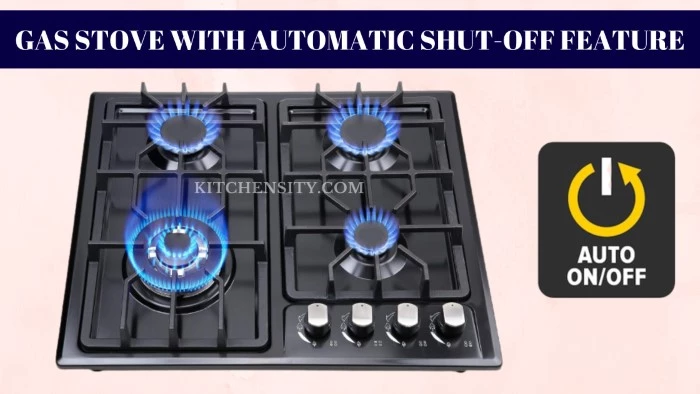
The inclusion of automatic shut-off features is a common practice in the design of gas stoves to reduce the risk of accidents and gas-related incidents.
Some of the common types of automatic shut-off features found in gas stoves include:
- Flame Failure Device (FFD):
- The Flame Failure Device is a critical safety feature in many gas stoves.
- It detects whether the flame on a burner is burning as it should.
- If the FFD senses that the flame has gone out unexpectedly, it will automatically shut off the gas supply to that burner.
- This prevents the release of unburned gas into your kitchen, reducing the risk of fire or gas-related accidents.
- Timer-Based Shut-Off:
- Some gas stoves are equipped with timer-based shut-off features.
- Users can set a specific cooking time for each burner.
- Once the timer reaches zero, the gas stove will automatically turn off.
- This feature is useful for preventing overcooking and ensuring that the stove is not left unattended for extended periods.
- Thermocouple Shutoff:
- Thermocouples are safety devices commonly found in older gas stoves.
- A thermocouple is a sensor placed near the pilot light of a gas burner.
- It constantly monitors the presence of a flame.
- If the pilot light extinguishes due to a draft or other reasons, the thermocouple quickly detects the absence of heat and generates a signal.
- This signal triggers the automatic shutoff of the gas supply to the burner.
- Thermocouples provide a reliable way to prevent gas from flowing if the pilot light is not burning, enhancing safety in older gas stoves.
- Child Safety Locks:
- Gas stoves intended for households with children often include child safety locks.
- These locks prevent young children from accidentally turning on the stove.
- Some models may also have an automatic shut-off if the stove remains inactive for a specified duration.
- Child safety locks add an extra layer of safety for families with kids.
- Gas Leak Detection:
- While not a direct shut-off mechanism, some gas stoves have gas leak detection systems.
- These systems monitor the air in the vicinity of the stove for the presence of gas.
- If a gas leak is detected, an alarm sounds, alerting you to the potential danger.
- This feature provides an added layer of protection against gas leaks.
- Overheating Protection:
- Gas stoves may include sensors that monitor the temperature of the burners and other components.
- If the stove becomes excessively hot, indicating a potential issue, the automatic shutoff feature can deactivate the burners to prevent overheating and damage.
- Power Failure Detection:
- In some gas stoves, a power failure detection feature can shut off the gas supply or burners if there’s a disruption in the electrical power source.
- This is particularly important in stoves with electronic ignition systems that require electricity to operate.
- Manual Override:
- While automatic shutoff features are essential for safety, many gas stoves allow for manual overrides.
- Users can typically reactivate the stove after addressing the issue or condition that triggered the shutoff.
It’s important to note that not all gas stoves have all of these features, and the availability of these features may vary depending on the make and model of the stove.
However, the presence of automatic shut-off features is a significant safety enhancement in modern gas stoves, providing users with peace of mind and reducing the risk of accidents and gas-related incidents.
Also Read – What Happens If You Use Propane On A Natural Gas Stove?
Pros And Cons Of Having Automatic Shutoff Features In Gas Stoves
Automatic shut-off features in gas stoves offer several advantages, but they also have some limitations. Here are the pros and cons of having automatic shut-off features in gas stoves:
| Pros of Automatic Shut-Off Features | Cons of Automatic Shut-Off Features |
| Enhanced Safety | False Alarms |
| Fire Prevention | Inconvenience |
| Protection Against Gas Leaks | Complexity |
| Peace of Mind | Maintenance |
| Child Safety | Compatibility |
| Energy Efficiency And Compliance with Safety Standards | Cost |
PROS
- Enhanced Safety: The primary benefit of automatic shut-off features is enhanced safety. They help prevent accidents and hazards associated with gas stoves, such as gas leaks, fires, and burns.
- Fire Prevention: Automatic shut-off features, such as the Flame Failure Device (FFD), can quickly detect if the flame goes out unexpectedly and cut off the gas supply, reducing the risk of fires.
- Protection Against Gas Leaks: These features minimize the chances of gas leaks by shutting off the gas supply when a problem is detected, preventing the release of unburned gas.
- Peace of Mind: Users can cook with peace of mind, knowing that their gas stoves are equipped with safety mechanisms that reduce the likelihood of accidents.
- Child Safety: Child safety locks and automatic shut-off timers provide added protection for households with children, preventing them from accidentally turning on the stove or leaving it unattended.
- Energy Efficiency: Timer-based shut-off features can save energy by ensuring that the stove is not left on longer than necessary, reducing utility bills and environmental impact.
- Compliance with Safety Standards: Automatic shut-off features help gas stoves meet safety standards and regulations, ensuring consumer protection and liability prevention.
CONS
- False Alarms: Automatic shut-off features can sometimes trigger false alarms. For example, a gust of wind near the stove may extinguish the flame momentarily, causing the FFD to shut off the gas supply unnecessarily.
- Inconvenience: In certain situations, automatic shut-off can be inconvenient. For instance, if you step away from the stove briefly, it may shut off due to inactivity, requiring you to restart the burner.
- Complexity: Some users may find the additional features and safety mechanisms in modern gas stoves to be complex or challenging to understand, potentially leading to confusion or frustration.
- Maintenance: The sensors and mechanisms involved in automatic shut-off features require regular maintenance and testing to ensure they function correctly. Neglecting maintenance can lead to false alarms or reduced safety.
- Compatibility: Not all gas stoves come equipped with the same automatic shut-off features. The availability of these features can vary depending on the make and model of the stove.
- Cost: Gas stoves with advanced safety features, such as multiple automatic shut-off mechanisms, tend to be more expensive than basic models.
Also Read – Master Medium Heat On A Stove
How To Test Your Gas Stove’s Automatic Shutoff Feature?
Testing your gas stove’s automatic shutoff feature is essential to ensure that it functions correctly and enhances safety in your kitchen. Here are the steps to test your gas stove’s automatic shutoff feature:
Important Note: Before performing any tests, refer to your gas stove’s user manual for specific instructions and safety precautions. If you are unsure about any aspect of the testing process, it’s advisable to consult a qualified technician.
- Safety Precautions:
- Turn off all burners and make sure they are in the “off” position.
- Ensure there are no flammable materials or items near the stove.
- Ventilate the kitchen by opening windows or using an exhaust fan to disperse any gas that may be released during testing.
- Locate The Automatic Shutoff Mechanism:
- Identify the specific automatic shutoff mechanism(s) in your gas stove. Common mechanisms include the Flame Failure Device (FFD), thermocouple, or timer-based shut-off.
- Testing The Flame Failure Device (FFD):
- For stoves equipped with an FFD, turn on one of the burners.
- Wait for the flame to ignite. You should see a steady flame.
- Carefully blow out the flame or use a long lighter to extinguish it.
- Observe the behavior of the burner:
- If the burner’s gas supply shuts off within a few seconds of the flame going out, the FFD is functioning correctly.
- If the gas continues to flow despite the flame being out, the FFD may be faulty, and you should contact a technician for repairs.
- Testing Timer-Based Shut-Off:
- For stoves with timer-based shut-off features, turn on a burner.
- Set a timer for a short duration (e.g., 10 minutes).
- Let the burner operate until the timer reaches zero.
- Observe whether the burner automatically turns off when the timer expires.
- If the burner does not shut off as expected, there may be an issue with the timer-based shut-off mechanism, and you should seek professional assistance.
- Testing Thermocouple Shutoff (If Applicable):
- If your gas stove has a thermocouple as a safety mechanism, turn on a burner.
- Wait for the flame to ignite and stabilize.
- Carefully blow out the flame or use a long lighter to extinguish it.
- Observe whether the gas supply to the burner is automatically shut off within a few seconds.
- If the gas continues to flow after extinguishing the flame, the thermocouple may require adjustment or replacement, which should be performed by a qualified technician.
- Repeat For Other Burners:
- If your gas stove has multiple burners, repeat the testing process for each burner to ensure that all automatic shutoff mechanisms are functioning correctly.
- Record And Maintain:
- Keep a record of your testing results and the date of testing for reference.
- Regularly perform these tests as recommended in your stove’s user manual to ensure ongoing safety and functionality.
Remember that safety should be the top priority when testing your gas stove’s automatic shutoff features. If you encounter any issues during testing or have doubts about the functionality of these safety mechanisms, it is advisable to contact a professional technician for a thorough inspection and necessary repairs.
Also Read – Should A Slow Cooker Simmer On Low?
Safety Tips For Using A Gas Stove With An Automatic Shutoff Feature
Using a gas stove with an automatic shutoff feature enhances safety in your kitchen, but it’s essential to follow specific safety tips to ensure that these mechanisms work effectively.
Here are some safety tips for using a gas stove with an automatic shutoff feature:
- Always keep the burner covers in place when using the stove. This will help to prevent food and liquids from spilling onto the burners, which can cause the flame to go out.
- Never leave food unattended on the stove. Even if the stove has an automatic shutoff feature, it is still important to stay nearby and keep an eye on the food.
- Turn off the stove when you are finished cooking. This will help to prevent gas leaks and other accidents.
- If the flame on a burner goes out, turn off the burner and do not try to relight it until you have checked for a gas leak. To check for a gas leak, you can use a gas detector or simply sniff around the stove for the smell of gas. If you smell gas, immediately leave the area and call your gas company.
- If you notice any problems with the automatic shutoff feature, such as the flame not going out when the burner is turned off, have the stove repaired by a qualified technician.
Here are some additional safety tips that you can follow:
- Do not use the stove if it is damaged or malfunctioning.
- Keep the stove clean and free of debris.
- Have the stove inspected and cleaned by a qualified technician every year?
By following these safety tips and maintaining a vigilant approach to cooking with a gas stove, you can ensure that the automatic shutoff features enhance safety while you enjoy the convenience of your kitchen appliances.
Common Problems With Automatic Shutoff Features
Automatic shutoff features in various appliances, including gas stoves, are designed to enhance safety, but they can experience issues or malfunctions over time. Here are some common problems associated with automatic shutoff features:
- False Alarms:
- One of the most frequent issues is false alarms.
- Sensors may misinterpret normal conditions as safety hazards, causing the automatic shutoff to activate unnecessarily.
- This can be triggered by sudden drafts, temperature fluctuations, or minor interruptions in gas supply.
- Sensor Contamination: Dust, grease, or debris can accumulate on sensors or thermocouples, interfering with their ability to detect the correct conditions. Regular cleaning and maintenance are essential to prevent this problem.
- Component Wear And Tear: Automatic shutoff mechanisms have components that may wear out over time due to regular use. This can include worn-out thermocouples or malfunctioning FFDs, leading to unreliable operation.
- Corrosion: Corrosion or rust on the sensor or connection points can affect the accuracy of automatic shutoff features. This is especially common in areas with high humidity or salty air.
- Improper Installation: If the automatic shutoff feature was not installed correctly during the initial setup of the appliance, it may not function as intended. Proper installation is critical for reliable operation.
- Power Supply Issues: Automatic shutoff features in gas stoves with electronic ignition systems require a stable power supply. Electrical issues or power fluctuations can lead to inconsistent performance or failure.
- Outdated Technology: Older gas stoves may have outdated automatic shutoff mechanisms that are less reliable or lack advanced features found in newer models.
- Lack Of Maintenance: Neglecting regular maintenance, such as cleaning, testing, and sensor calibration, can lead to reduced functionality and increased chances of problems.
- Gas Pressure Variations: Variations in gas pressure can affect the performance of automatic shutoff features, especially in regions with inconsistent gas supply.
- Component Misalignment: Over time, components like thermocouples or sensors may become misaligned or loose, affecting their ability to function correctly.
- Temperature Extremes: Extremely high or low temperatures can impact the operation of some automatic shutoff mechanisms, such as those using wax-filled sensors.
- User Error: In some cases, users may accidentally trigger the automatic shutoff feature by using the appliance improperly or misinterpreting safety controls.
- Gas Line Issues: Problems with the gas line, such as leaks or blockages, can affect the performance of automatic shutoff features. Regular inspections of gas lines are essential.
- Component Aging: Like any mechanical or electronic component, automatic shutoff mechanisms can degrade with age, leading to reduced reliability.
- Manufacturing Defects: In rare instances, manufacturing defects in sensors, valves, or other components can lead to malfunctions in the automatic shutoff feature.
To address these common problems and ensure the reliable operation of automatic shutoff features, it’s essential to follow manufacturer-recommended maintenance procedures, have regular inspections by qualified technicians, and promptly address any issues that arise.
Regular testing of the feature can also help detect problems early and ensure it functions as intended.
Also Read – Is Simmer Lower Than Low?
How To Maintain Your Gas Stove’s Automatic Shutoff Feature?
Maintaining your gas stove’s automatic shutoff feature is crucial to ensure its reliable operation and enhance kitchen safety. Here are steps to help you maintain this important safety mechanism:
Note: Always follow the manufacturer’s guidelines and recommendations for maintenance, as specific procedures may vary based on the make and model of your gas stove.
- Read The User Manual: Start by thoroughly reading the user manual that came with your gas stove. It contains essential information on maintenance procedures and safety guidelines specific to your appliance.
- Regular Cleaning: Keep the stove’s burners, grates, and surrounding areas clean and free of grease, debris, and food residues. Dirty or clogged burners can affect the performance of automatic shutoff mechanisms.
- Inspect Sensors And Thermocouples: Periodically inspect the sensors, thermocouples, and other safety components for signs of damage, corrosion, or contamination. If you notice any issues, consult the user manual for guidance on cleaning or replacement.
- Testing: Regularly test the automatic shutoff feature according to the manufacturer’s recommendations. This often involves testing the Flame Failure Device (FFD) or other shutoff mechanisms to ensure they respond correctly.
- Gas Line Inspection: Have a qualified technician inspect the gas line and connections for leaks or damage. Any issues with the gas supply can affect the functionality of the automatic shutoff feature.
- Calibration (If Applicable): Some automatic shutoff features, such as thermocouples, may require periodic calibration. Consult the user manual for instructions on how to calibrate these components properly.
- Ventilation: Ensure that the kitchen is adequately ventilated to disperse any gas fumes that may accumulate during cooking. Proper ventilation reduces the risk of false alarms.
- Power Supply Check: If your gas stove has electronic components, such as an electronic ignition system, ensure that it has a stable power supply. Check electrical connections for loose wires or damaged components.
- Burner Maintenance: Regularly clean and maintain the burners, including the burner ports and flame spreaders. Clogged or inefficient burners can impact the performance of the automatic shutoff feature.
- Child Safety Locks: If your stove has child safety locks, ensure they are functioning correctly to prevent accidental burner activation.
- Professional Inspection: Schedule regular professional inspections of your gas stove, including the automatic shutoff feature, at least once a year or as recommended by the manufacturer. Qualified technicians can identify and address issues that may not be apparent during routine maintenance.
- Record Keeping: Keep a record of maintenance activities, inspections, and any issues you encounter. This record can help track the stove’s performance and ensure timely maintenance.
- Emergency Plan: Have an emergency plan in place in case the automatic shutoff feature is triggered due to a genuine safety concern. Know how to safely turn off the gas supply to your home and contact emergency services if needed.
Regular maintenance and inspections are essential to ensure that your gas stove’s automatic shutoff feature functions correctly, enhancing kitchen safety and providing peace of mind.
Prioritize safety, and don’t hesitate to seek professional assistance if you encounter any issues or concerns with your gas stove.
Also Read – How To Simmer On An Electric Stove?
What To Do If Your Gas Stove’s Automatic Shutoff Feature Malfunctions?
If you suspect that your gas stove’s automatic shutoff feature is malfunctioning or if it has triggered unexpectedly, it’s important to take prompt and appropriate action to ensure your safety.
Here’s what to do if you believe your gas stove’s automatic shutoff feature is not working correctly:
- Immediate Safety Measures:
- First and foremost, ensure your safety and the safety of others in your household.
- If you smell gas or suspect a gas leak, immediately:
- Do not turn on or off any electrical appliances, including light switches.
- Do not use any open flames, including matches or lighters.
- Evacuate the premises and leave the door open to allow gas to dissipate.
- Contact your gas provider and emergency services to report the suspected gas leak.
- Ventilation: If you believe the automatic shutoff feature has malfunctioned and there is no immediate safety hazard, open windows and doors to ventilate the area and disperse any gas fumes.
- Isolate The Stove: If it is safe to do so, isolate the gas stove from the gas supply to prevent further gas flow and reduce the risk of potential hazards. Locate the gas shut-off valve and turn it off.
- Avoid Ignition: Do not attempt to light the stove manually if you suspect a malfunction. This can be dangerous, especially if there is a gas leak.
- Do Not Attempt Repairs: Do not attempt to repair or tamper with the automatic shutoff feature unless you are a qualified technician. DIY repairs can lead to further issues and safety risks.
- Contact A Professional:
- Once you have taken immediate safety measures, contact a qualified technician or appliance repair specialist to inspect and diagnose the issue with the automatic shutoff feature.
- They will have the expertise to identify the problem and perform any necessary repairs or replacements.
- Document The Issue: Before the technician arrives, if possible, document the issue you observed with the automatic shutoff feature. Provide details about what happened, when it occurred, and any unusual behavior or symptoms.
- Regular Maintenance And Testing:
- After the issue is resolved, ensure that you perform regular maintenance and testing of your gas stove’s automatic shutoff feature according to the manufacturer’s recommendations.
- Regular inspections can help prevent future malfunctions and enhance safety.
Remember that gas-related issues, including malfunctioning automatic shutoff features, should be taken seriously due to the potential safety hazards they pose. Safety should always be the top priority when dealing with gas appliances.
If you ever have doubts or concerns about the functionality of your gas stove or its safety features, seek professional assistance immediately.
Also Read – What Temperature Is Simmer On An Electric Stove?
Final Verdict
In the modern era of convenience and safety, gas stoves have evolved to incorporate automatic shutoff features that enhance both the cooking experience and overall kitchen safety. The question, “Do Gas Stoves Turn Off Automatically?” can be confidently answered with a resounding “Yes.”
Automatic shutoff features, such as the Flame Failure Device (FFD), timer-based shut-off, thermocouples, and more, have become standard components in many gas stoves. These safety mechanisms are designed to detect specific conditions or issues that could pose a risk and take immediate action to prevent accidents and hazards.
The inclusion of these features offers numerous advantages. They significantly reduce the risk of gas leaks, fires, and burn injuries by quickly shutting off the gas supply or burners when needed. These safety mechanisms also provide peace of mind to users, allowing them to cook with confidence, knowing that their gas stoves are equipped with reliable safety measures.
However, it’s crucial to note that while gas stoves can turn off automatically, they are not infallible. Common problems, such as false alarms, sensor contamination, or component wear and tear, can affect their performance.
Therefore, regular maintenance, testing, and professional inspections are essential to ensure that these safety features function correctly.
Also Read – What Does Simmer Look Like?
FAQs (Frequently Asked Questions)
-
What Happens If You Forget To Turn Off The Gas Stove?
Forgetting to turn off a gas stove can lead to gas leaks and potential fire hazards, posing serious safety risks.
-
Do Gas Stoves Have A Safety Shut Off?
Yes, many gas stoves are equipped with safety shut-off features, such as the Flame Failure Device (FFD), to enhance safety by automatically cutting off the gas supply in case of issues.
-
Do All Gas Stoves Have Automatic Shut-Off Features?
Not all gas stoves have automatic shut-off features, but many modern models do include them as a safety measure.
-
Can I Retrofit My Older Gas Stove With An Automatic Shut-Off Feature?
Retrofitting an older gas stove with an automatic shut-off feature may be possible, but it’s best to consult a professional technician for guidance.
-
What Should I Do If I Smell Gas Near My Gas Stove?
If you smell gas near your gas stove, immediately turn off the stove, ventilate the area, and contact your gas utility provider or a professional technician.
-
Are Gas Stoves Safe For Households With Children?
Gas stoves can be safe for households with children if they are equipped with child safety locks and if parents or guardians exercise caution and supervision.
-
Is It Necessary To Have A Gas Detector In My Kitchen If I Have A Gas Stove With Safety Features?
While not mandatory, having a gas detector in your kitchen can provide an extra layer of protection by alerting you to the presence of gas leaks.
Katrina Smith is a seasoned expert with over 25 years of experience in all things related to cooking and the kitchen. As an avid cook and kitchen enthusiast, she is passionate about sharing her knowledge and expertise on cookware, kitchen appliances, kitchen tips, and kitchen staples.
Through her articles and reviews, Katrina aims to inspire and help others improve their cooking skills, experiment with different ingredients, and invest in quality cookware and appliances.

